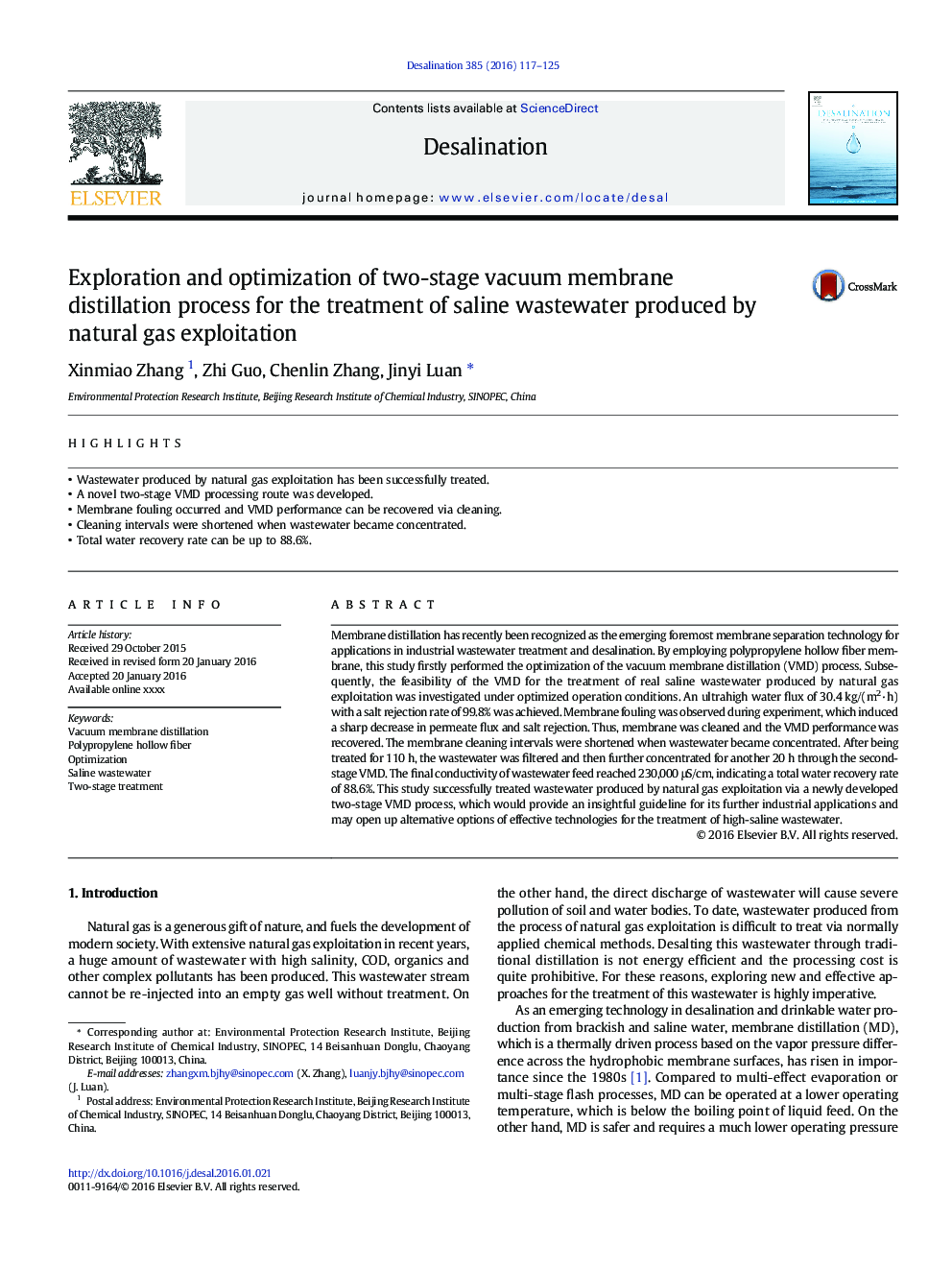| Article ID | Journal | Published Year | Pages | File Type |
|---|---|---|---|---|
| 622902 | Desalination | 2016 | 9 Pages |
Abstract
Membrane distillation has recently been recognized as the emerging foremost membrane separation technology for applications in industrial wastewater treatment and desalination. By employing polypropylene hollow fiber membrane, this study firstly performed the optimization of the vacuum membrane distillation (VMD) process. Subsequently, the feasibility of the VMD for the treatment of real saline wastewater produced by natural gas exploitation was investigated under optimized operation conditions. An ultrahigh water flux of 30.4 kg/(m2·h) with a salt rejection rate of 99.8% was achieved. Membrane fouling was observed during experiment, which induced a sharp decrease in permeate flux and salt rejection. Thus, membrane was cleaned and the VMD performance was recovered. The membrane cleaning intervals were shortened when wastewater became concentrated. After being treated for 110 h, the wastewater was filtered and then further concentrated for another 20 h through the second-stage VMD. The final conductivity of wastewater feed reached 230,000 μS/cm, indicating a total water recovery rate of 88.6%. This study successfully treated wastewater produced by natural gas exploitation via a newly developed two-stage VMD process, which would provide an insightful guideline for its further industrial applications and may open up alternative options of effective technologies for the treatment of high-saline wastewater.
Related Topics
Physical Sciences and Engineering
Chemical Engineering
Filtration and Separation
Authors
Xinmiao Zhang, Zhi Guo, Chenlin Zhang, Jinyi Luan,
